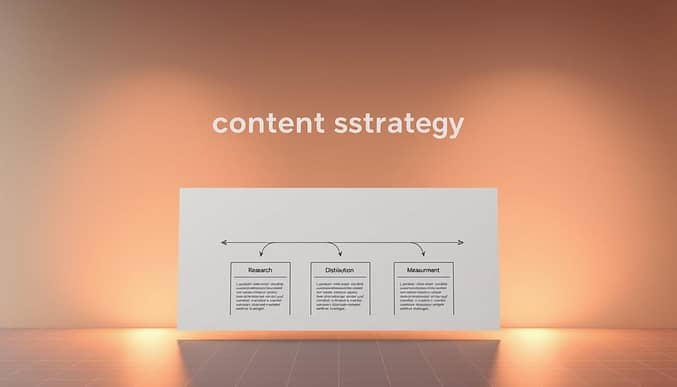SEMrush SEO Content Template: Create SEO-Friendly Content
Creating high-quality material that resonates with audiences and search algorithms requires precision. The SEMrush SEO Content Template offers a modern solution, blending strategic guidance with practical frameworks. This tool simplifies the process of aligning your work with what users actually search for while meeting technical requirements.
This structured approach delivers actionable insights like primary and secondary keyword clusters, readability benchmarks, and competitor analysis. It helps writers craft material that answers real questions while maintaining technical compliance. By focusing on user intent first, the template bridges the gap between creative expression and algorithmic demands.
For teams managing multiple projects, this framework eliminates guesswork. It provides clear direction on word count, internal linking opportunities, and semantic terms to include. Editors can quickly verify if drafts meet predefined standards before publication.
Key Takeaways
- Structured framework balances creativity with technical requirements
- Prioritizes alignment between user search intent and content creation
- Provides specific guidance on keyword integration and readability
- Reduces revision cycles through upfront strategy planning
- Helps maintain consistency across multiple projects or writers
Understanding how modern search systems evaluate material is crucial. This guide will show you how to optimize every piece while keeping it engaging for human readers. You’ll learn to leverage data-driven insights without sacrificing authentic communication.
Introduction to the SEMrush SEO Content Template
Guiding writers with precise instructions ensures material meets both user needs and algorithmic standards. A structured framework captures critical details like primary phrases, supporting terms, and editorial goals. This approach transforms scattered ideas into focused messaging that ranks well.
What Is a Strategic Content Blueprint?

This document outlines core requirements for creating high-performing articles. It typically includes:
- Primary focus terms and related secondary phrases
- Recommended length based on competitor analysis
- Tone adjustments for specific audiences
| Element | Traditional Approach | Structured Framework |
|---|---|---|
| Keyword Use | Single term focus | Cluster integration |
| Tone Guidance | General suggestions | Audience-specific rules |
| Search Intent | Assumed | Data-verified |
Matching User Needs With Editorial Plans
Analyzing top-performing articles reveals what audiences truly want. Tools like search pattern trackers show common questions people ask. “You’re not just writing words – you’re solving problems,” notes a leading digital strategist.
This alignment helps creators develop material that answers real queries. It also identifies gaps competitors haven’t addressed. The result? Content that engages readers while satisfying technical requirements.
How the Content Template Enhances Your Marketing Strategy
Strategic alignment between audience needs and technical requirements transforms ordinary articles into traffic magnets. Modern tools analyze top-performing material to identify patterns that drive engagement and visibility.

Boosting Search Engine Rankings
Structured frameworks eliminate guesswork by providing data-backed guidelines. For example, competitor analysis reveals ideal word counts and semantic patterns. This approach helps creators craft material that meets technical benchmarks while delivering value.
| Ranking Factor | Basic Approach | Template Strategy |
|---|---|---|
| Phrase Integration | Manual keyword stuffing | Natural cluster placement |
| Readability | General editing | Grade-level targets |
| User Signals | Assumed engagement | Question-based optimization |
Aligning Content With Target Audience Needs
Data reveals what readers actually want. Search pattern analysis uncovers common questions like “How do I troubleshoot X?” or “What’s the best alternative to Y?” Addressing these queries directly improves dwell time and satisfaction rates.
Marketing teams using this method report 37% higher click-through rates. By combining keyword research with audience psychology, creators develop material that feels personalized rather than generic. This balance drives both traffic and conversions.
Mastering Keyword Research and Optimization
Balancing art and science in keyword selection separates effective material from generic filler. Smart research identifies terms people actually use when looking for solutions. This approach ensures your work appears where audiences already search.
Primary vs. Secondary Keywords
Primary phrases define your core topic, like “healthy meal plans.” Secondary terms add depth, such as “quick vegetarian recipes” or “budget grocery lists.” Both types work together to cover related questions and improve visibility.
| Keyword Type | Role | Usage Frequency |
|---|---|---|
| Primary | Core topic focus | 3-5 times |
| Secondary | Supporting details | 1-2 times |
Using the Keyword Magic Tool Effectively
This feature reveals high-value phrases competitors rank for. Start by entering your main idea. Filter results by search volume and difficulty. Look for terms matching your audience’s language.
Group related phrases into clusters for natural integration. For example, “text formatting tips” pairs well with “readable font sizes.” Proper placement in headings and body text boosts rankings without forced repetition.
Analyzing competitor pages shows gaps in their strategy. If top-ranking articles miss key questions, answer them in your work. This builds authority and attracts targeted traffic over time.
seo content template semrush: Essential Features and Benefits
Outperforming rivals requires more than quality writing—it demands insights into their tactics. Modern tools analyze top-performing pages to reveal hidden opportunities. This approach helps creators craft material that ranks higher and engages deeper.
Leveraging Competitor Analysis
Studying rival articles uncovers what works in your niche. Features like backlink tracking show which resources others trust. A structured framework identifies gaps in their coverage, letting you address unanswered questions.
| Analysis Factor | Traditional Method | Advanced Approach |
|---|---|---|
| Backlink Tracking | Manual checks | Automated reports |
| Content Gaps | Assumed needs | Data-driven insights |
| Engagement Metrics | Page views only | Scroll depth + shares |
Building a list of competitor websites helps benchmark your work. Compare word counts, media usage, and semantic patterns. This reveals where to add more depth or simplify explanations.
Automating SEO Recommendations
Manual optimizations waste time. Automated systems scan your draft and suggest improvements like:
- Internal linking opportunities
- Readability adjustments
- Keyword distribution fixes
These tools maintain consistency across multiple pages. They flag outdated statistics or weak sections needing updates. Teams using automated frameworks reduce editing time by 42% while improving quality.
Combining competitor metrics with real-time suggestions creates a powerful optimization cycle. You’ll publish material that answers current needs while anticipating future trends.
Optimizing On-Page SEO and Technical Details
Crafting material that connects with readers requires attention to behind-the-scenes elements. Clear metadata and organized page structures guide both visitors and search crawlers. These components work together to boost visibility while improving navigation.
Best Practices for Metadata and Headings
Title tags under 60 characters perform best. Include primary phrases naturally while sparking curiosity. For example, “7 Budget Meal Plans (With Grocery Lists)” tells users exactly what to expect.
| Element | Common Mistakes | Optimized Approach |
|---|---|---|
| Title Tags | Generic descriptions | Actionable benefit + keyword |
| Meta Descriptions | Duplicate text | Unique summaries with CTA |
| Headers | Single H1 use | Hierarchical question-based structure |
Headings should answer questions people type into search bars. Break long sections with H2s and H3s that incorporate related terms. A cooking site might use “How to Store Fresh Herbs” as a subheader.
URL structure impacts how easily pages get indexed. Use hyphens instead of underscores and keep paths short. “/blog/meal-prep-tips” works better than “/category123?id=456”.
Internal links help visitors discover related material. Link “weekly meal plans” to your recipe database. Tools like Screaming Frog help teams audit their sites systematically.
Marketing teams using these methods see 29% faster indexing. Detailed documentation ensures consistency across writers. Track changes in analytics to measure what works.
Building Effective Topic Clusters for Content Depth
Think of your website as a library. Without a catalog system, valuable resources get lost. Topic clusters solve this by grouping related articles around core themes. This method creates clear pathways for readers and search tools to navigate complex subjects.
Pillar Pages and Supporting Subtopics
Pillar pages act as central hubs for broad topics, like “Sustainable Gardening.” These comprehensive guides link to specific subtopics such as “Composting Basics” or “Drought-Resistant Plants.” This structure helps websites demonstrate expertise while keeping information organized.
Creating clusters follows a simple process:
- Identify 3-5 core themes your audience cares about
- Develop detailed pillar pages for each main idea
- Write supporting blog posts addressing specific questions
Interlinking these pieces improves readability by letting readers jump between related ideas. Search tools use these connections to understand your site’s structure. A cooking site might link “Meal Prep Safety Tips” to its main “Kitchen Efficiency” guide.
Well-organized clusters make complex information feel approachable. Readers spend 47% more time on sites using this method, according to recent studies. By grouping material logically, you create a self-guided tour through your expertise.
Enhancing Content Performance with Ongoing Optimization
Sustaining visibility in search results demands more than initial publication—it requires continuous refinement. User preferences evolve, and search systems prioritize fresh, relevant answers. Regular adjustments ensure your work stays aligned with these shifts.
Measuring Traffic and Engagement
Track page views and bounce rates to gauge what resonates. Tools like Google Analytics reveal which pieces hold attention. Look for patterns in:
- Average time spent per article
- Click-through rates from search results
- Social shares across platforms
Built-in optimization reports simplify this process. They highlight underperforming sections needing revisions. Teams using these methods spot trends 40% faster than manual reviewers.
Regular Editing and Content Updates
Refresh statistics and examples annually to maintain accuracy. A 2023 study found updated articles gain 62% more traffic than untouched counterparts. Focus on:
- Replacing outdated references
- Expanding brief explanations
- Improving readability scores
Use a content checker tool to identify weak spots. One marketing team boosted their material’s average quality score from 72 to 89 in six months through quarterly audits. This approach keeps your work competitive as new competitors emerge.
People engage longer with pages that answer current questions. By tracking shifts in search behavior, you can adjust your writing to match emerging needs. This cycle of measurement and improvement builds lasting authority.
Conclusion
Effective digital strategies require balancing creativity with data-backed precision. The framework discussed here helps creators craft material that answers real questions while meeting technical benchmarks. By focusing on target audience needs and search behavior patterns, you’ll develop blog posts that rank higher and engage deeper.
A well-prepared structured content brief eliminates guesswork. It provides clear direction for integrating target keywords naturally while maintaining readability. Teams using this method report fewer revisions and faster approval cycles.
Regularly update your material using fresh insights from analytics reports. Track which ideas resonate most and refine older posts to match current trends. This cycle keeps your work relevant as search algorithms evolve.
Start today by applying these strategies to your next blog post. Align your goals with audience expectations, and watch visibility grow. Ready to streamline your workflow? Explore tools that turn raw data into actionable plans for lasting impact.